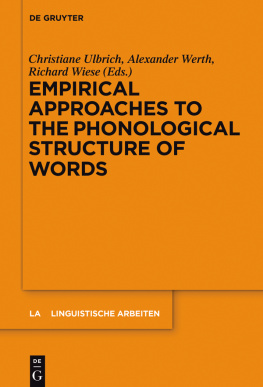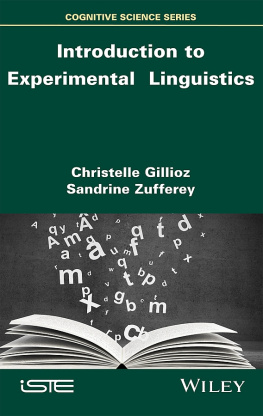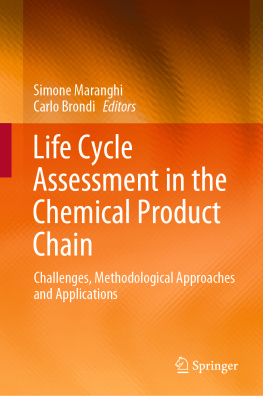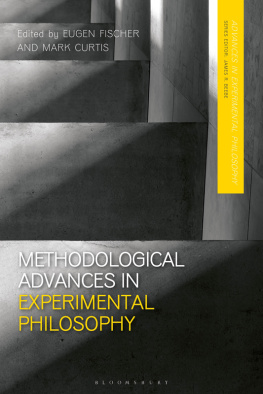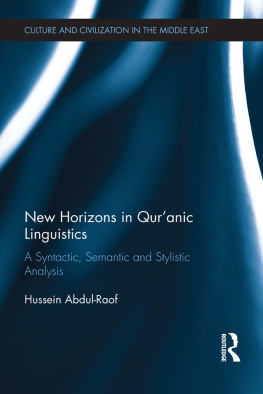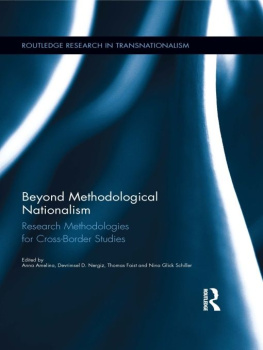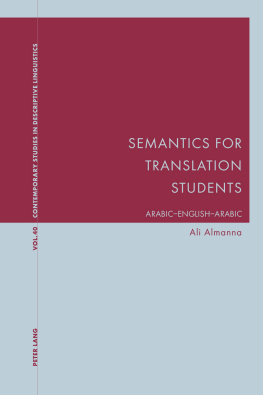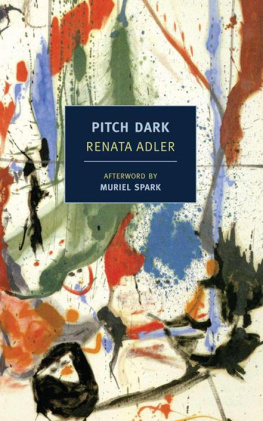Renata Enghels - New Approaches to Contrastive Linguistics: Empirical and Methodological Challenges
Here you can read online Renata Enghels - New Approaches to Contrastive Linguistics: Empirical and Methodological Challenges full text of the book (entire story) in english for free. Download pdf and epub, get meaning, cover and reviews about this ebook. year: 2020, publisher: De Gruyter, genre: Science. Description of the work, (preface) as well as reviews are available. Best literature library LitArk.com created for fans of good reading and offers a wide selection of genres:
Romance novel
Science fiction
Adventure
Detective
Science
History
Home and family
Prose
Art
Politics
Computer
Non-fiction
Religion
Business
Children
Humor
Choose a favorite category and find really read worthwhile books. Enjoy immersion in the world of imagination, feel the emotions of the characters or learn something new for yourself, make an fascinating discovery.

- Book:New Approaches to Contrastive Linguistics: Empirical and Methodological Challenges
- Author:
- Publisher:De Gruyter
- Genre:
- Year:2020
- Rating:4 / 5
- Favourites:Add to favourites
- Your mark:
- 80
- 1
- 2
- 3
- 4
- 5
New Approaches to Contrastive Linguistics: Empirical and Methodological Challenges: summary, description and annotation
We offer to read an annotation, description, summary or preface (depends on what the author of the book "New Approaches to Contrastive Linguistics: Empirical and Methodological Challenges" wrote himself). If you haven't found the necessary information about the book — write in the comments, we will try to find it.
Renata Enghels: author's other books
Who wrote New Approaches to Contrastive Linguistics: Empirical and Methodological Challenges? Find out the surname, the name of the author of the book and a list of all author's works by series.
New Approaches to Contrastive Linguistics: Empirical and Methodological Challenges — read online for free the complete book (whole text) full work
Below is the text of the book, divided by pages. System saving the place of the last page read, allows you to conveniently read the book "New Approaches to Contrastive Linguistics: Empirical and Methodological Challenges" online for free, without having to search again every time where you left off. Put a bookmark, and you can go to the page where you finished reading at any time.
Font size:
Interval:
Bookmark:
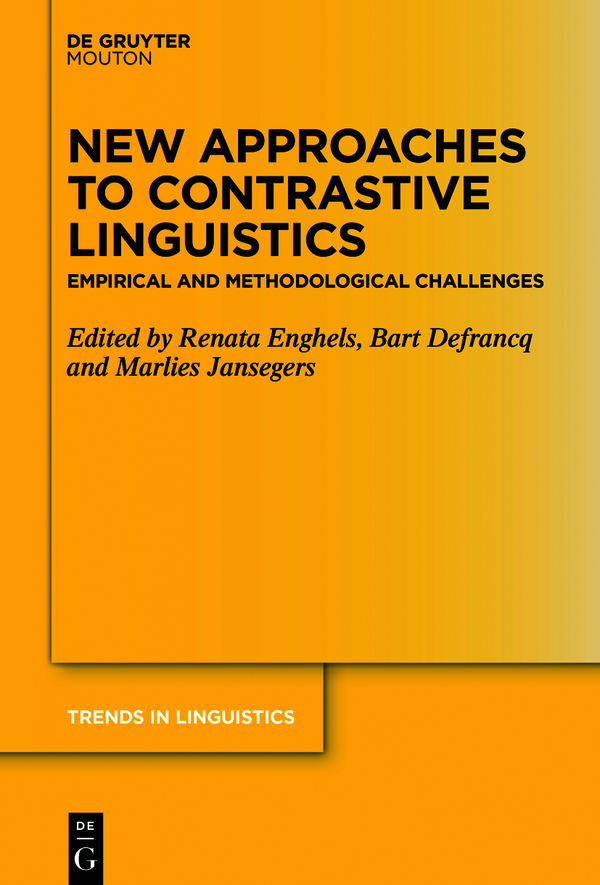
Trends in Linguistics. Studies and Monographs [TiLSM]
Edited by
Volume
ISBN 9783110682397
e-ISBN (PDF) 9783110682588
e-ISBN (EPUB) 9783110682670
Bibliographic information published by the Deutsche Nationalbibliothek
The Deutsche Nationalbibliothek lists this publication in the Deutsche Nationalbibliografie; detailed bibliographic data are available on the Internet at http://dnb.dnb.de.
2020 Walter de Gruyter GmbH, Berlin/Boston
The practice of comparing languages has a long tradition characterized by a cyclic pattern of interest ().
Still, it is not until quite recently that contrastive linguistics has risen to the fore again in linguistic scholarship, and this mainly under the influence of cognitive and functional theories. In the 1990s contrastive linguistics underwent a significant revival, which mainly originated from its meeting with corpus linguistics. This has led to a new wave of corpus-based contrastive studies, gradually extending from morpho-syntactically and phonologically related topics towards new domains, including discourse studies and pragmatics (e.g. ).
As opposed to historical comparative linguistics, contrastive linguistics has a purely synchronic orientation, and is not necessarily concerned with describing genetic relationships (although a historical description may contribute to a more adequate contrastive one, and allows situating languages on a historical cline).
) which, from a methodological viewpoint, could inspire more graph-based language comparisons.
Still, until today there are many different challenges to the field of contrastive linguistics that have not yet been fully addressed. First, while a decade ago it was still possible to claim that the focus has mainly been on European (Germanic and Romance) languages (and the compilation of data drawn from social media, like Twitter (e.g. Argelles lvarez and Muoz Muoz 2012). The use of these resources is not yet widespread among linguists, but, more importantly, the question as to whether and to what extent particular types of data can help answer research questions in the area of contrastive linguistics is still open.
A second challenge relates to the methodological branch of corpus-based contrastive linguistics, which, according to Gast (2015: 5), is still tender. Advanced methods and procedures (such as logistic and mixed-effects regression techniques, clustering analyses, cf. among others ), are becoming common ground in linguistics, but are still underrepresented in contrastive linguistics.
The above-mentioned challenges were addressed during the workshop New Approaches to Contrastive Linguistics: Empirical and Methodological Challenges organized in September 2017 in Zrich, in the framework of the SLE conference. This volume is a selection of the papers presented in Zrich collected with an aim to reflect on the value and applicability of theories, types of empirical data and advanced research methods in contrastive linguistics. The contributions present contrastive (case) studies and make use of (more) rigorous empirically-based contrastive analyses and/or new data types. As such, some of the main research questions guiding the papers throughout the volume are:
What (new) types of data are the most useful for what kind of contrastive questions and which data pose risks?
How can we most efficiently make use of translation corpora for contrastive linguistics, while taking into account linguistic interferences and translation universals?
Is it mandatory to complement translation data with comparable corpus data, or does this depend on the level of linguistic analysis (e.g. studies on lexical cognates vs. syntactic cognates vs. pragmatic phenomena)?
How can we go beyond a mere comparison of frequency tables between different comparable corpora?
Which (advanced) statistical techniques are most suited to deal with the multidimensionality of contrastive research questions?
How can we compare multifactoriality behind specific linguistic phenomena in two or more languages?
Answers to these questions are provided through the contrastive analysis of many different languages: Romance (Spanish/French/Italian in Gries, Jansegers, and Miglio), Germanic (English/German in Boas, and in Neumann; English/Dutch in Defrancq and Collard, and in De Baets, Vandevoorde, and De Sutter; English/Dutch/German in Bossuyt and Leuschner; English/Swedish in Viberg), or by adopting a broader typological spectrum (Silvennoinen). The papers also touch upon a wide variety of phenomena situated at different linguistic levels: cross-linguistic lexical near-synonyms (perception verbs in Gries, Jansegers, and Miglio; inchoative lexemes in De Baets, Vandevoorde, and De Sutter; verbs of cutting and breaking in Viberg; irrelevance particles by Bossuyt and Leuschner; cognitive verbs in Defrancq and Collard), near-synonymous constructions and frames (cf. contrastive negation constructions by Silvennoinen; questioning frames by Boas; verbal and nominal constructions by Neumann).
The practice of comparing languages inevitably leads to the use of notions such as equivalence or correspondence which are far from undisputed in the literature. In order to compare linguistic structures, items or meanings across languages, the common ground on which to compare, or tertium comparationis () needs to be kept constant, and the contrastive linguists task is to analyze whether in different languages the same linguistic devices are used. Taking such an approach determines several aspects of the research: it determines (i) what types of corpora are useful to build and to exploit, (ii) which concepts the cross-linguistic research can focus on, and (iii) what linguistic strategies used cross-linguistically to instantiate those concepts can be investigated.
With respect to the first aspect, the lack of full comparability across texts in different languages constitutes a major stumbling block in the composition of comparable corpora. As an example, the paper of Bossuyt and Leuschner (this volume) showcases the ConVerGENTie corpus, a multilingual comparable corpus including seven subcorpora in English, Dutch, German, French, Spanish, Portuguese and Italian (of each approximately 1.5 million words), collected through identical sampling strategies. It is shown by the authors that the downside of the rigorous corpus design is the limited extension of the database as a whole and, hence, the difficulty to find a representative sample of a particular phenomenon one wants to study in different languages. A solution for this data problem may consist in the reference to additional individual monolingual corpora, and as such, abandon the maximum comparability requirement.
Font size:
Interval:
Bookmark:
Similar books «New Approaches to Contrastive Linguistics: Empirical and Methodological Challenges»
Look at similar books to New Approaches to Contrastive Linguistics: Empirical and Methodological Challenges. We have selected literature similar in name and meaning in the hope of providing readers with more options to find new, interesting, not yet read works.
Discussion, reviews of the book New Approaches to Contrastive Linguistics: Empirical and Methodological Challenges and just readers' own opinions. Leave your comments, write what you think about the work, its meaning or the main characters. Specify what exactly you liked and what you didn't like, and why you think so.

